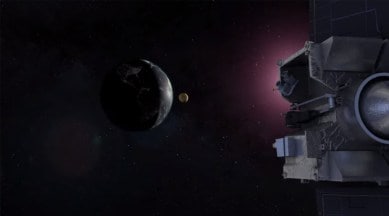NASA gears up for landmark sample delivery from Asteroid Bennu
NASA is preparing for the finale of the OSIRIS-REx mission, which will be the first US mission to return a sample from an asteroid to Earth.

NASA’s OSIRIS-REx spacecraft is on the final leg of its two-year journey back to Earth after collecting samples from the rocky surface of the asteroid Bennu.
When a capsule containing the sample touches down in a desert in Utah on September 24, 2023, it will become the first United States mission to return an asteroid sample back to Earth.
After spending seven long years in space, the pathbreaking mission will face one of its biggest challenges yet– delivering the asteroid sample to Earth while making sure it is protected from heat, vibrations, and any contamination from our planet.
The American space agency is now preparing to accurately land the samples and retrieve them safely.
Pinpointed re-entry
The spacecraft itself will not land on Earth. Rather, it will “drop” a capsule containing the sample. To accurately make the “parcel drop” to our planet, the OSIRIS-REx spacecraft will have to enter our planet at a precise speed and direction.
According to Mike Moreau, OSIRIS-REx deputy project manager at NASA, if the capsule is angled too high during the drop, it will skip off the atmosphere. More like a rock skipping across a river, except the “rock” in this situation would end up in outer space. On the flip side, if it is angled too low, it will burn up in our planet’s atmosphere.
Why is the sample of asteroid Bennu important?
In a way, asteroids can act as “time capsules” for the earliest history of our solar systems. This is because they can preserve chemical signatures from a long time ago when our universe was a younger place. Interestingly, it is even possible that they could contain samples of the ancient building blocks of life.
How is NASA preparing for OSIRIS-REx’s return?
As of now, OSIRIS-REx team members from NASA and aerospace companies KinetX and Lockeed Martin are using computer models to test navigation plans. These simulations test various weather, solar activity and space debris scenarios to make sure that when the capsule enters Earth’s atmosphere at the scheduled time of 8.11 PM IST on September 24, it will touch down in the target area after 13 minutes.
At this point, recovery crews will secure the capsule’s landing site. They will then transport the capsule to a portable clean room. NASA crews will also collect soil and air samples from around the landing capsule. These samples will help the space agency identify if any contaminants entered the asteroid sample.